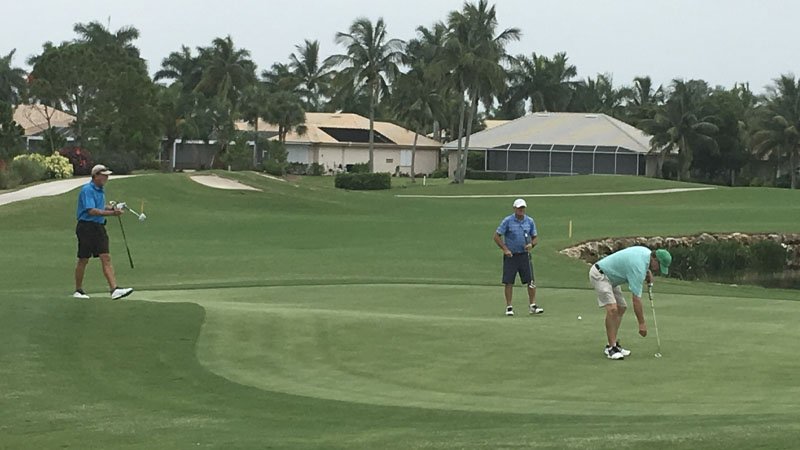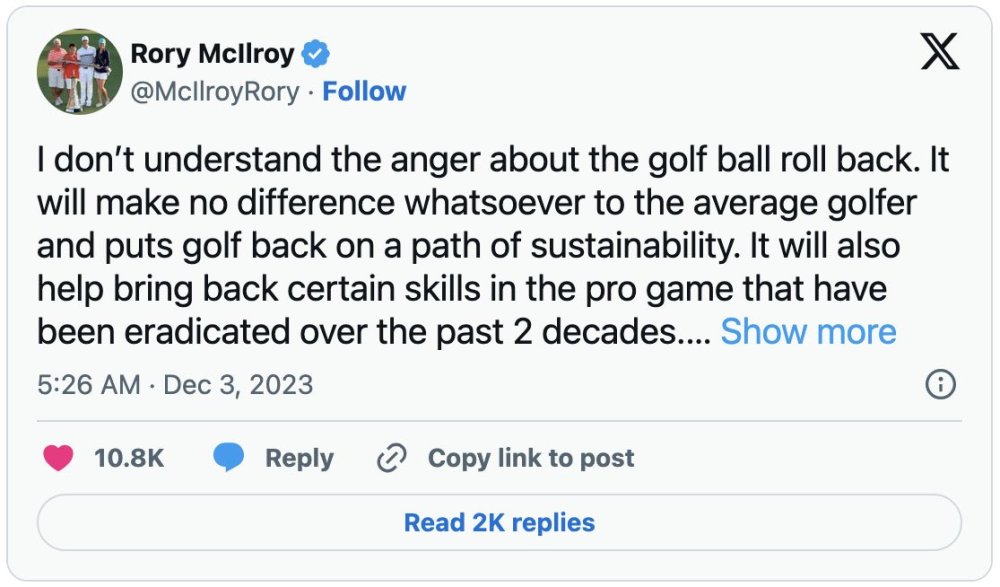Perhaps nothing so far off in the future has been met with so much emotion than the recent joint announcement by the USGA and R&A on pending regulations on the golf ball.
The rollback of golf ball technology designed to reduce distance has been met with furor by many recreational golfers and embraced by many of the game's best players, most notably Rory McIlroy.
The plan for the rollback that will go into effect in 2028 is to reduce hitting distance for what the announcement called the "long-term stability of the game."
The USGA and R&A predict a loss of 10-15 yards per club for professionals, low-handicappers and long hitters, and 1-5 yards per club for everyone else.

Some say that is a big deal, while others dismiss it. The truth depends on who you ask and who you’re talking about — tour pros who bomb it off the tee, or amateur players seeking ways to squeeze every possible yard out of every shot.
According to one golf industry professional with an eye for golf course design and hosting play at the highest amateur level, the rollback goes too far for some golfers and not far enough for others.
"I don't like it. It doesn't do enough to decrease distance for professional golfers, and anything that hurts the average golfer is not good," said golf journalist, architecture expert and founder of the Golfweek's Best raters system Brad Klein, Ph.D. "This isn't like the anchored putter where it affects only professional golfers. This affects everybody."
At age 69, Klein says Mother Nature already is taking distance from his game faster than the USGA can. Losing additional yardage could change the game dramatically for older players who historically prop up the game's numbers from a participation standpoint.
"I used to be comfortable playing from about 6,800 yards. Now, I'm comfortable at about 5,800," he said.
"I figure with the changes to the golf ball a golf course will play 125 yards longer for me. The cat's already out of the bag, because so many courses are not relevant for the elite tour player."
Anything that hurts the average golfer is not good.
Klein, who was instrumental in starting the old Golfweek's SuperNEWS magazine, said he doesn't anticipate the rollback having much of an effect on superintendents, but said the rollback could have varied effects on course design.
"New golf courses are designed to play at 7,500 to 7,800 yards," he said. "That's not going to change, but I think there will be a little less pressure to lengthen golf courses for anyone doing a renovation in the next three to four years."
Taking distance away from the casual golfer is not good for a game that is trying to attract new players of different ages and cultural backgrounds as Baby Boomers gradually cycle out.
"I worry about that, but that's down the road," Klein said.
Klein believes more should be done to change how the ball performs for the game's best players.
"They're not changing ball performance at high speeds, and they're not changing equipment or physicality,” he said. “It doesn't go far enough."
While casual golfers struggle with lost distance, elite tour players likely will be able to overcome such losses.
"The reality is (USGA and R&A) don't know what the effect will be, because they don't have the ball yet," Klein said. "If the distance deteriorates for tour pros, I think what will happen is they'll just learn to swing harder. If it were up to me, I would have encouraged the ball manufacturers to develop a ball whose performance deteriorates at a certain ball speed, maybe 170 miles an hour. That would force tour players to gear back their swing."
Some professional tour players were outspoken about the rollback, while others had a different view, including McIlroy, who spoke out on social media saying: "I don’t understand the anger about the golf ball roll back. It will make no difference whatsoever to the average golfer and puts golf back on a path of sustainability. It will also help bring back certain skills in the pro game that have been eradicated over the past 2 decades."
With the growth and stability of the game paramount and much more reliant on daily play at the grassroots level than tour golf, some see opinions like McIlroy's as a bit out of touch.
"Of course distance is a factor," Klein said. "To be so dismissive is a bit flip.
"There's nothing wrong with collaborating to change the game. The USGA and R&A have been doing it for 120 years. But if you do it, you have to get it right. What they've done here is like jumping out of an airplane without a parachute."



